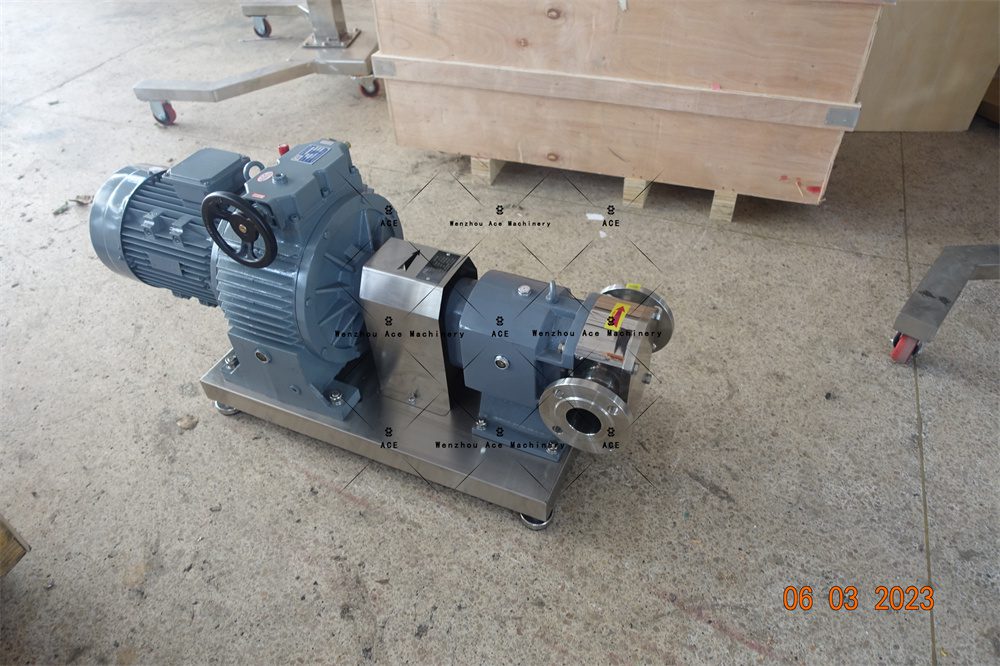A lobe pump is a high-performance positive displacement pump designed for precise, sanitary, and efficient fluid transfer. Its unique design and operational benefits have made it a preferred choice in industries that require gentle handling, durability, and compliance with strict hygiene standards. Unlike conventional pump systems, the lobe pump offers consistent, non-pulsating flow while minimizing product damage, energy consumption, and maintenance requirements. This combination of features makes it an invaluable tool in sectors such as food and beverage, pharmaceuticals, biotechnology, chemicals, and cosmetics.
The Engineering Behind a Lobe Pump
The functional principle of a lobe pump revolves around the synchronized rotation of two or more lobes inside a casing. As these lobes rotate, they create cavities between themselves and the casing. These expanding cavities on the suction side of the pump draw in the fluid, which is then carried around the interior of the casing. When the cavities contract on the discharge side, the fluid is forced out in a steady, controlled manner.
One of the key features of a lobe pump is that the lobes do not come into contact with each other. This not only reduces wear and tear but also eliminates the risk of metal contamination, making it suitable for sensitive or abrasive fluids. The lobes may come in various configurations such as bi-wing, tri-lobe, or multi-lobe, depending on the desired application. Each design is tailored to optimize flow rates, minimize shear, and ensure long-term reliability.
Common Applications of Lobe Pumps
The versatility of a lobe pump makes it highly adaptable to a wide range of industrial processes. In the food and beverage industry, these pumps are widely used to handle viscous or delicate products like yogurt, honey, salad dressings, and fruit purées. Their ability to maintain product integrity while delivering high flow rates makes them essential for maintaining quality during production.
In pharmaceutical and biotech facilities, a lobe pump is used for transporting sterile solutions, creams, and biologically active compounds. The non-contact design, coupled with materials like stainless steel and FDA-compliant elastomers, ensures contamination-free operation. Clean-in-place (CIP) and sterilize-in-place (SIP) capabilities further enhance its suitability for high-purity environments.
Chemical processing plants benefit from the robust construction and chemical resistance of lobe pumps. They are capable of handling corrosive fluids, resins, and slurries without compromising performance. Their ability to function under varying pressure conditions and viscosities allows them to support continuous or batch operations with equal efficiency.
Key Benefits of Using a Lobe Pump
One of the most significant advantages of a lobe pump is its ability to handle fluids with minimal shear. This low-shear operation ensures that products retain their original structure and consistency, which is vital for industries such as food, cosmetics, and pharmaceuticals. Whether transferring chunky sauces or delicate emulsions, a lobe pump protects the integrity of the product.
The self-priming nature of the pump allows it to operate effectively even when the suction line contains air. This feature is highly beneficial in applications that involve intermittent flow or frequent starts and stops. It also enhances operational flexibility and reduces the need for complex system design.
Lobe pumps are also valued for their ease of maintenance. Since the lobes do not touch, internal wear is minimized, leading to a longer service life. When maintenance is required, the pump can often be serviced without removing it from the production line, thanks to easy access to internal components. This design reduces downtime and helps maintain continuous production cycles.
Hygiene and cleanliness are critical in industries like food and pharmaceuticals, and a lobe pump excels in this area. Its smooth surfaces, lack of internal crevices, and sanitary-grade materials make it easy to clean and sterilize. Many models support automatic cleaning and sterilization, eliminating manual cleaning tasks and ensuring compliance with strict regulatory standards.
Factors to Evaluate Before Choosing a Lobe Pump
When selecting a lobe pump for a specific application, several factors must be taken into account. Fluid characteristics such as viscosity, abrasiveness, temperature, and sensitivity will influence the choice of materials and pump configuration. For example, handling thick, sticky fluids may require wider clearances or special lobe geometries.
Pressure requirements and flow rate expectations should also be considered. A lobe pump is capable of maintaining consistent flow across varying pressures, but selecting the correct model ensures optimal efficiency and longevity. In high-pressure applications, reinforced casings and seals may be necessary to prevent leaks and maintain performance.
Material compatibility is another important factor. Pumps can be made from stainless steel, alloys, or specialty plastics, depending on the fluid’s chemical composition. Using the right materials extends the pump’s life and reduces maintenance frequency.
Lastly, the operating environment plays a crucial role. In cleanroom or sterile conditions, features like hermetically sealed shafts, aseptic designs, and automated cleaning systems are critical. For rugged industrial environments, enhanced durability and resistance to wear may take precedence.
Innovation and Excellence in Lobe Pump Manufacturing
Advanced manufacturers such as Ace Lobe Pump are at the forefront of lobe pump innovation. They are constantly refining their designs to meet evolving industry demands. From compact models designed for laboratory use to large-scale industrial pumps, Ace Lobe Pump provides precision-engineered solutions that combine durability, hygiene, and performance.
Technological advancements in rotor design, smart monitoring, and modular construction have led to greater flexibility and user control. Pumps can now be equipped with sensors and remote diagnostics to enable predictive maintenance and real-time optimization, which helps reduce costs and improve overall system performance.
Customizability is another area where leading manufacturers excel. Companies can choose from a variety of lobe types, materials, port configurations, and drive options to match their specific process requirements. This level of adaptability ensures that the pump can be integrated seamlessly into existing systems with minimal disruption.
Conclusion
A lobe pump is more than just a mechanical device; it’s a strategic asset in modern fluid handling. Its ability to manage challenging materials with efficiency, hygiene, and low maintenance makes it a cornerstone of operations in critical industries. As performance standards rise and operational efficiency becomes increasingly important, the demand for high-quality, precision-engineered lobe pumps continues to grow. For companies looking to optimize their processes with cutting-edge pumping technology, trusted providers like Ace Lobe Pump offer comprehensive solutions built for today’s industrial challenges.



